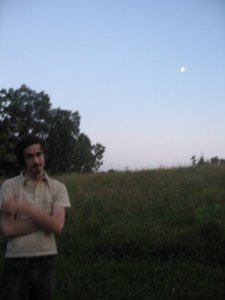A world
parallel to our own through overlapping.
We call it "Nature"; only reluctantly
admitting ourselves to be "Nature" too.Denise Levertov
from "Sojourns in the Parallel World"
Lawrence University professor Jodi Sedlock's career took many turns before she became the bat-researching biologist she is today. She began as a visual artist who, while studying in Chicago, began to make scientific sketches at the Field Museum. This led to internships and more chances to study biology and her eventual research of Philippine bats.
Hearing her story made me think about some artists who use nature, science, and conservationism explicitly in their own art. One of the most remarkable pieces I've seen/heard lately is by British artist Katie Paterson, whose art deals largely with environmental issues. For her piece Langjökull, Snæfellsjökull, Solheimajökull, Paterson froze the runoff water from melting glaciers into records that could be played on a phonograph until they inevitably melted. You can listen to the beautifully ephemeral result here.
 (I also just discovered that Paterson's piece All the Dead Stars was featured in the Tate Triennial Altermodern exhibit curated by Nicolas Bourriaud. What a small, globalized world we live in.)
(I also just discovered that Paterson's piece All the Dead Stars was featured in the Tate Triennial Altermodern exhibit curated by Nicolas Bourriaud. What a small, globalized world we live in.)Phonograph technology is also used in Alunda Kyrkokör's terrafon, an enormous gramophone that can be pulled through dirt to play the surface of the earth like an LP.
Harvest by Alunda Kyrkokör (2009) from Olle Corneer on Vimeo.
Musician Jacques Dudon created "photosonic" instruments that turn light energy into sound and "aquaphones" that use the sonic properties of water. To play his photosonic instruments, he projects light and manipulates it using rotating colored plastic discs and lenses to synthesize sounds in just intonation, a tuning system that is built upon the naturally-occurring overtones of sound and (by extension) light. The result is pretty psychedelic.


The glacier/turn table piece and the plowing piece make us realize how much experimentation is left to do with the trail of obsolete technologies.
ReplyDelete